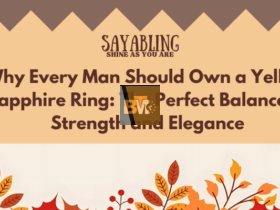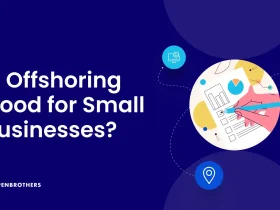Understanding Hippie Fashion and Its Cultural Significance
Hippie fashion represents more than just a clothing style—it embodies a cultural movement that celebrates freedom, peace, and individual expression through clothing choices. Rooted in the counterculture movement of the 1960s and 1970s, hippie fashion continues to influence modern bohemian style, offering timeless elements that appeal to those seeking comfort, creativity, and connection with nature. This distinctive fashion aesthetic emphasizes natural fabrics, flowing silhouettes, vibrant colors, and handcrafted details that reflect the hippie philosophy of living authentically and rejecting conventional social norms.
The Evolution of Hippie Fashion Through Decades
Origins in the 1960s Counterculture Movement
The foundation of hippie fashion emerged during the transformative 1960s when young people began rejecting the structured, conservative clothing of previous generations. Early hippie fashion drew inspiration from various cultural sources, including Indian and Middle Eastern textiles, Native American craftsmanship, and folk traditions from around the world. This eclectic approach created a unique aesthetic that celebrated diversity, creativity, and cultural appreciation while expressing opposition to materialism and conventional beauty standards.
1970s Expansion and Mainstream Influence
During the 1970s, hippie fashion reached its peak popularity and began influencing mainstream fashion trends. The decade saw the widespread adoption of bell-bottom jeans, peasant blouses, maxi dresses, and fringe details in both high fashion and everyday wear. Fashion designers began incorporating hippie-inspired elements into their collections, while department stores started carrying bohemian-style clothing to meet growing consumer demand for free-spirited fashion alternatives.
Modern Revival and Contemporary Interpretations
Contemporary hippie fashion has evolved to blend classic bohemian elements with modern sensibilities, creating styles that honor the original movement while addressing current fashion preferences and lifestyle needs. Today’s hippie fashion incorporates sustainable materials, ethical manufacturing practices, and updated silhouettes that work for both casual and professional settings. This modern interpretation maintains the core principles of comfort, creativity, and individual expression while adapting to contemporary fashion standards and social expectations.
Essential Elements of Hippie Fashion
Natural Fabrics and Sustainable Materials
Authentic hippie fashion prioritizes natural, breathable fabrics that connect wearers with the earth and promote comfort throughout the day. Cotton, linen, hemp, and bamboo fabrics form the foundation of hippie wardrobes, offering durability, comfort, and environmental sustainability. These materials align with hippie values of environmental consciousness and natural living while providing the flowing, comfortable fit that defines bohemian style. Organic and sustainably sourced fabrics have become increasingly important in modern hippie fashion, reflecting contemporary environmental awareness and ethical consumption practices.
Flowing Silhouettes and Comfortable Fits
Hippie fashion emphasizes loose, flowing silhouettes that allow for freedom of movement and comfortable wear throughout the day. Maxi dresses, wide-leg pants, oversized tunics, and flowing skirts create the characteristic relaxed aesthetic that defines bohemian style. These comfortable fits reject the restrictive clothing standards of conventional fashion, instead celebrating the natural body shape and prioritizing physical comfort over rigid structure. The flowing nature of hippie clothing also creates beautiful movement and visual interest, enhancing the wearer’s natural grace and confidence.
Vibrant Colors and Psychedelic Patterns
Color plays a crucial role in hippie fashion, with earth tones, jewel tones, and rainbow hues all finding their place in bohemian wardrobes. Tie-dye patterns, paisley designs, floral prints, and geometric motifs create visual interest and express the creative, artistic spirit of hippie culture. These patterns often carry symbolic meaning, representing peace, love, nature, and spiritual beliefs that align with hippie philosophy. The bold use of color and pattern in hippie fashion encourages self-expression and celebrates the beauty found in diversity and creativity.

Key Hippie Fashion Pieces and Styling Tips
Dresses and Feminine Silhouettes
Hippie dresses encompass a wide range of styles, from casual sundresses to elegant maxi gowns suitable for special occasions. Peasant dresses feature off-shoulder necklines, puffed sleeves, and gathered waistlines that create a romantic, feminine aesthetic. Maxi dresses offer floor-length elegance with comfortable fits that work for various body types and occasions. Tunic dresses provide versatility for layering and can be styled with leggings, jeans, or worn alone as mini dresses. These dress styles often feature embroidered details, lace trim, or beaded embellishments that add handcrafted charm and bohemian flair.
Pants and Bottom Options
Bell-bottom jeans remain an iconic element of hippie fashion, offering a retro aesthetic that flatters various body types while providing comfortable wear. Wide-leg pants in flowing fabrics create elegant silhouettes suitable for both casual and dressy occasions. Palazzo pants offer maximum comfort and movement while maintaining a polished appearance appropriate for work or social events. Harem pants and yoga pants reflect the connection between hippie fashion and wellness culture, providing comfortable options for active lifestyles and meditation practices.
Tops and Layering Pieces
Peasant blouses with flowing sleeves, embroidered details, and romantic necklines form the foundation of hippie top collections. Off-shoulder tops and crop tops offer modern interpretations of classic bohemian styles while providing versatility for different body types and style preferences. Kimono-style cardigans and flowing vests create perfect layering pieces that add visual interest and adapt outfits to changing weather conditions. Tank tops in natural fabrics provide comfortable base layers that work well under transparent or semi-sheer bohemian pieces.
Outerwear and Jackets
Fringe jackets and vests add movement and texture to hippie outfits while providing light coverage for transitional weather. Denim jackets with embroidered details, patches, or distressing offer casual layering options that complement various bohemian pieces. Kimono-style jackets in flowing fabrics create elegant outer layers suitable for dressy occasions or professional settings. Crochet cardigans and knit ponchos provide cozy warmth while maintaining the handcrafted aesthetic that defines authentic hippie fashion.
Accessories and Finishing Touches
Jewelry and Spiritual Accessories
Hippie jewelry emphasizes natural materials, spiritual symbols, and handcrafted details that reflect personal beliefs and aesthetic preferences. Crystal jewelry, chakra bracelets, and gemstone necklaces connect wearers with natural energies and spiritual practices. Peace sign jewelry, dreamcatcher earrings, and symbol pendants express philosophical beliefs and cultural appreciation. Layered necklaces, stacked bracelets, and multiple rings create the eclectic, collected-over-time aesthetic that characterizes authentic bohemian style.
Hair Accessories and Headwear
Flower crowns remain one of the most recognizable hippie fashion accessories, perfect for festivals, weddings, or special occasions. Headbands in various styles—from simple fabric bands to elaborate beaded creations—offer practical and stylish hair management options. Hair scarves and bandanas provide versatile styling options that can be worn as headbands, hair ties, or decorative accents. Hats in natural materials like straw or felt add sun protection while enhancing the bohemian aesthetic with practical functionality.
Bags and Functional Accessories
Crossbody bags and messenger bags in natural materials or with ethnic-inspired patterns provide practical storage while maintaining hippie aesthetic appeal. Fringe purses and beaded bags add texture and visual interest to outfits while offering functional storage for daily essentials. Backpacks in canvas or hemp materials reflect the practical, travel-oriented lifestyle associated with hippie culture. Tote bags with spiritual symbols, peace signs, or nature motifs express personal values while providing eco-friendly alternatives to disposable shopping bags.
Footwear Options
Sandals form the foundation of hippie footwear, with options ranging from simple flip-flops to elaborate gladiator styles with multiple straps and decorative elements. Barefoot sandals and foot jewelry offer minimal coverage while adding decorative interest for beach or festival wear. Moccasins and soft leather shoes provide comfortable, earth-connected footwear options suitable for various activities and weather conditions. Combat boots or hiking boots can add an edgier element to hippie outfits while providing practical footwear for outdoor adventures and music festivals.
Styling Hippie Fashion for Different Occasions
Casual Everyday Wear
Creating everyday hippie fashion looks involves balancing comfort with style while maintaining the free-spirited aesthetic that defines bohemian clothing. Start with comfortable foundation pieces like wide-leg pants or maxi skirts paired with flowing tops or peasant blouses. Add layering pieces such as lightweight cardigans or vests to create visual interest and adapt to temperature changes throughout the day. Complete casual looks with comfortable sandals or moccasins and minimal jewelry that reflects personal style preferences.
Professional and Work-Appropriate Styles
Adapting hippie fashion for professional environments requires careful selection of pieces that maintain bohemian aesthetic while meeting workplace dress codes. Choose structured blazers or cardigans to pair with flowing blouses, creating a balance between professional polish and bohemian flair. Maxi skirts or wide-leg pants in solid colors or subtle patterns provide comfortable alternatives to traditional business wear. Incorporate hippie elements through accessories like scarves, jewelry, or handbags rather than relying on bold patterns or revealing silhouettes.
Festival and Special Event Styling
Music festivals and special events provide perfect opportunities to embrace bold hippie fashion choices and creative styling combinations. Layer multiple pieces to create visually interesting outfits that photograph well and express personal creativity. Incorporate statement accessories like flower crowns, layered jewelry, and decorative hair pieces to enhance festival looks. Choose fabrics and colors that coordinate with outdoor settings and lighting conditions while prioritizing comfort for long days of standing and dancing.
Seasonal Adaptations
Adapting hippie fashion for different seasons requires strategic layering and fabric choices while maintaining the core aesthetic elements. Summer hippie fashion emphasizes lightweight fabrics, minimal coverage, and breathable materials suitable for hot weather and outdoor activities. Fall and winter adaptations incorporate heavier fabrics, layering pieces, and warm accessories while maintaining flowing silhouettes and natural materials. Spring styling focuses on transitional pieces that can be layered or worn alone as weather conditions change throughout the day.

Shopping for Authentic Hippie Fashion
Vintage and Thrift Store Finds
Vintage and thrift stores offer excellent sources for authentic hippie fashion pieces, often at affordable prices that align with counterculture values of reusing and recycling. Look for genuine vintage pieces from the 1960s and 1970s, including bell-bottom jeans, peasant blouses, and unique accessories that carry historical significance. Thrift shopping also supports sustainable fashion practices by extending the life of existing garments rather than contributing to fast fashion consumption.
Sustainable and Ethical Brands
Modern consumers can support hippie values through purchasing decisions that prioritize ethical manufacturing and sustainable materials. Research brands that use organic fabrics, fair trade practices, and environmentally responsible production methods. Look for companies that support artisan communities, pay fair wages, and minimize environmental impact through responsible business practices. These purchasing decisions align with hippie philosophy while supporting positive social and environmental change.
DIY and Customization Options
Creating custom hippie fashion pieces through DIY projects and alterations allows for personal expression while developing creative skills and reducing fashion costs. Learn basic sewing techniques to alter thrift store finds or create unique pieces from scratch. Experiment with tie-dye techniques, embroidery, and fabric painting to customize existing garments with personal touches. Add fringe, beads, or patches to transform basic pieces into unique hippie fashion statements that reflect individual creativity and style preferences.
Cultural Appreciation and Respectful Fashion Choices
Understanding Cultural Origins
Hippie fashion draws inspiration from various cultures around the world, making it important to approach these influences with respect and understanding. Research the cultural significance of patterns, symbols, and garments to ensure appropriate and respectful use. Appreciate the craftsmanship and traditions behind ethnic-inspired pieces while avoiding appropriation of sacred or ceremonial items. Support authentic artisans and traditional craftspeople when possible to honor the cultural origins of hippie fashion inspiration.
Supporting Artisan Communities
Many hippie fashion pieces benefit from the skills and traditions of artisan communities around the world. Seek out fair trade organizations and ethical suppliers that provide appropriate compensation and working conditions for craftspeople. Purchase authentic handmade items when possible, supporting traditional techniques and providing economic opportunities for artisan communities. This approach aligns with hippie values of social justice and global consciousness while ensuring quality craftsmanship in fashion purchases.

Frequently Asked Questions (FAQs)
What defines authentic hippie fashion style?
Authentic hippie fashion is characterized by natural fabrics like cotton, hemp, and linen, flowing silhouettes that prioritize comfort, earth tones and vibrant colors, handcrafted details and ethnic-inspired patterns, layered jewelry and accessories, and sustainable, ethically-made clothing choices. The style emphasizes individual expression, comfort, and connection with nature while rejecting conventional fashion standards and materialism.
How can I incorporate hippie fashion into my everyday wardrobe?
Start by adding key bohemian pieces to your existing wardrobe, such as a flowing maxi dress, bell-bottom jeans, peasant blouse, or fringe jacket. Incorporate hippie accessories like layered jewelry, headbands, or crossbody bags with your current outfits. Choose natural fabrics and earth tones when shopping for new pieces. Gradually build your collection with versatile items that can be mixed and matched to create various hippie-inspired looks suitable for your lifestyle.
Is hippie fashion appropriate for professional work environments?
Hippie fashion can be adapted for professional settings by choosing more structured pieces in bohemian styles, such as tailored blazers with flowing blouses, wide-leg pants in solid colors, or maxi skirts paired with fitted tops. Incorporate subtle hippie elements through accessories like scarves, jewelry, or handbags rather than bold patterns or revealing cuts. Focus on quality fabrics and classic bohemian silhouettes that maintain professional appearance while expressing personal style.
Where can I find affordable hippie fashion clothing?
Affordable hippie fashion can be found at thrift stores and vintage shops, online marketplaces and secondhand clothing sites, discount retailers that carry bohemian-style pieces, DIY projects using basic clothing items and embellishments, clothing swaps and community exchanges, and end-of-season sales at bohemian fashion retailers. Creating your own pieces through sewing and customization can also be cost-effective while ensuring unique, personalized items.
What accessories are essential for hippie fashion?
Essential hippie fashion accessories include layered jewelry featuring natural materials and spiritual symbols, headbands, flower crowns, or hair scarves, crossbody bags or fringe purses, comfortable sandals or moccasins, scarves for layering and versatility, and items with peace signs, crystals, or nature motifs. These accessories help create the eclectic, collected-over-time aesthetic that defines authentic bohemian style while allowing for personal expression and creativity.
How do I style hippie fashion for different seasons?
For summer, focus on lightweight fabrics, flowing dresses, sandals, and minimal layering with breathable materials like cotton and linen. Fall styling incorporates cardigans, boots, and layered pieces while maintaining flowing silhouettes. Winter hippie fashion includes heavier fabrics, warm accessories like scarves and hats, and layering techniques that keep you comfortable while preserving bohemian aesthetic. Spring offers opportunities for transitional pieces that can be layered or worn alone as weather changes.
Can men wear hippie fashion styles?
Absolutely! Men’s hippie fashion includes bell-bottom or wide-leg jeans, flowing shirts and tunics, vests and jackets with fringe or embroidery, natural fiber clothing in earth tones, layered jewelry and accessories, headbands and longer hairstyles, and comfortable sandals or boots. Male hippie fashion emphasizes the same principles of comfort, natural materials, and individual expression while adapting silhouettes and styles appropriate for masculine preferences.
What fabrics should I look for in hippie fashion clothing?
Look for natural, sustainable fabrics such as organic cotton for breathability and comfort, linen for lightweight, flowing garments, hemp for durability and environmental sustainability, bamboo for softness and moisture-wicking properties, silk for luxury and draping qualities, and wool for warmth and natural texture. Avoid synthetic materials when possible, as natural fabrics align better with hippie values and provide superior comfort and breathability.
How can I create DIY hippie fashion pieces?
DIY hippie fashion projects include tie-dyeing plain clothing items with natural dyes or fabric paint, adding fringe to jackets, skirts, or bags, embroidering floral or spiritual motifs on blouses and jeans, distressing denim for a vintage appearance, creating jewelry from natural materials like stones and hemp, customizing t-shirts with patches or fabric paint, and upcycling thrift store finds with bohemian embellishments. Start with simple projects and gradually develop more advanced skills.
Is hippie fashion considered cultural appropriation?
Hippie fashion can involve cultural appropriation if sacred symbols, ceremonial items, or specific cultural garments are used inappropriately. To avoid appropriation, research the cultural significance of patterns and symbols before wearing them, support authentic artisans and fair trade organizations, avoid wearing items with religious or ceremonial significance, appreciate rather than appropriate cultural elements, and educate yourself about the origins of hippie fashion influences. Focus on the philosophical aspects of hippie culture rather than surface-level aesthetic copying.
What’s the difference between hippie fashion and bohemian style?
While closely related, hippie fashion specifically refers to the counterculture movement of the 1960s-70s with emphasis on peace, love, and anti-establishment values. Bohemian style has broader historical roots dating back to 19th century artistic communities and encompasses a wider range of creative, unconventional fashion choices. Modern usage often treats the terms interchangeably, but hippie fashion tends to be more specifically associated with natural living, spiritual elements, and countercultural values, while bohemian style can include various artistic and creative fashion expressions.
How do I maintain and care for hippie fashion clothing?
Care for hippie fashion clothing by washing natural fabrics in cold water to prevent shrinkage, air-drying items to maintain fabric integrity and reduce energy consumption, storing delicate pieces like embroidered items flat or on padded hangers, treating stains promptly with natural cleaning methods, rotating seasonal items properly to prevent damage, and following specific care instructions for different natural fabrics. Regular maintenance helps preserve the quality and appearance of natural fiber clothing while extending garment lifespan.








Leave a Reply